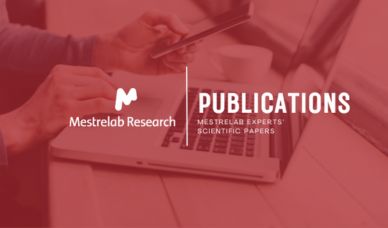Papers and Peer Reviewed Publications
Search on Papers and Peer Reviewed Publications category page
2024

In vivo NMR is evolving into an important tool to understand biological processes and environmental responses. Current approaches use flow systems to sustain the organisms with oxygenated water and food (e.g., algae) inside the NMR.

This work explores the evolution of auditory analysis in NMR spectroscopy, tracing its journey from a supplementary tool to visual methods such as oscilloscopes, to a technique sidelined due to technological advancements
2023

This paper presents a proof-of-concept method for classifying chemical compounds directly from NMR data without performing structure elucidation.
2022

Fragment-based drug discovery (FBDD) and validation of small molecule binders using NMR spectroscopy is an established and widely used method in the early stages of drug discovery. Starting from a library of small compounds, ligand- or protein-observed NMR methods are employed to detect binders, typically weak, that become the starting points for structure-activity relationships (SAR) by NMR.

The recent popularity of benchtop (BT) NMR systems has prompted its applications in undergraduate laboratories around the world. Owing to their low maintenance cost, due to the lack of a superconducting magnetic core, and simple operation, these BT NMR systems can fulfill many of the learning objectives outlined in the undergraduate organic chemistry curricula.

One of the interesting initiatives discussed during the IUPAC General Assembly a few weeks ago in Sao Paulo was the renewed push for more efficient and simpler ways of submitting supplementary spectroscopic data.
2020

Adequate characterization of chemical entities made for biological screening in the drug discovery context is critical. Incorrectly characterized structures lead to mistakes in the interpretation of structure–activity relationships and confuse an already multidimensional optimization problem.

Machine learning (ML) methods have been present in the field of NMR since decades, but it has experienced a tremendous growth in the last few years, especially thanks to the emergence of deep learning (DL) techniques taking advantage of the increased amounts of data and available computer power.
2019

Spectroscopic non-targeted methods are gaining ever-growing importance in quality control and authenticity assessment of food products because of their strong potential for identification of specific features of the products by data-driven classifiers.